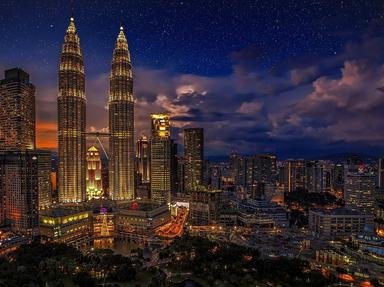Quiz Answer Key and Fun Facts
1. What is the meaning of imperialism?
2. Which one of these was a leading colonial country?
3. Key factors in the development of imperialism in the 19th century include the opening of the Suez Canal in 1869. Why was this event so crucial for many European imperialist countries?
4. What was the meaning of the 'White Man's Burden'?
5. What was the system of government in Asian countries before the arrival of the colonial powers?
6. Once the West did arrive, what system did they introduce on their new colonies?
7. Before the Philippines were occupied by the Spanish, there were small separate districts called 'Barangays', each ruled by a 'Datu'. After the Spanish occupied the Philippines, they united them into one under a new system. What was this new system called?
8. What dynasty ruled Burma before the British occupied the nation?
9. When the French seized Indochina from the Chinese, they formed a union of Vietnam, Laos and Cambodia. What was this union called?
10. When the British occupied Malaya, they introduced a new system for the states. This included the Strait Settlements (Negeri-negeri Selat). Which one of these states was part of the Strait Settlements?
11. Siam was the only country in South-East Asia never to be occupied by a Western country, despite the presence of Western advisers. In 1939, it was renamed by Phibul Songkram. What was the new name?
12. What did nationalism mean in the period c. 1890-1990 in countries under colonial rule?
13. The Philippines were the first country in South-East Asia to take up nationalism - against the Spanish. In 1892, the La Liga Filipina was formed that brought demands to the Spanish for political, economical and social changes. Who formed the league?
14. In 1898, Spain was at war with the United States of America. Emilio Aguinaldo assisted American forces in the Philippines to drive the Spanish out from the country. However, after the Spanish left, America refused to give the Philippines independence. What happened to Aguinaldo?
15. Name one of the many written works of Raden Adjeng Kartini of the Dutch East Indies.
16. What was the 'Viet Nam Quoc Dang Dang' (VNQDD)?
17. Why did Buddhist monks in Burma take up nationalism?
18. Who were the Thakins?
19. Which one of these people led Burmese nationalists?
20. Thailand began a new series of law in the 1930's. What was one of the features of the law?
Source: Author
WW2Master123
This quiz was reviewed by FunTrivia editor
bloomsby before going online.
Any errors found in FunTrivia content are routinely corrected through our feedback system.
